When radios across the UK announced that Britain would be joining WWI, women took up arms. But instead of fighting on the battlefields, they fought in the factories and warehouses that fueled the war machine. These photographs reveal that profound, almost seismic shift in what it meant to be a woman. Here we see women, whose hands were once assumed to be too delicate for anything but domestic tasks, confidently mastering heavy machinery and assembling the very munitions that armed the front lines.
In the grease-stained workshops and high-risk factories, these women discovered a resilience and competence within themselves that society had never acknowledged. They weren’t just contributing to the war effort; they were fundamentally redrawing the boundaries of their own lives, proving that their strength was not a substitute for men’s, but a powerful, capable force all its own.
#1 A Female Worker Employed On A Plain Net Machine At A Factory Of J. B. Tidmans Limited On Alfred Street In Nottingham
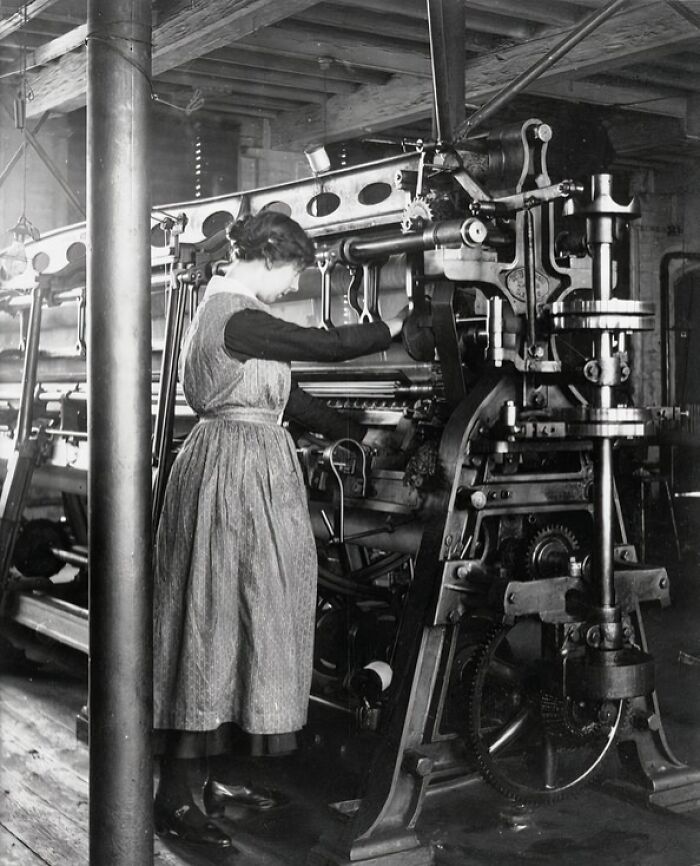
Image source: British official photographer
#2 Women At Work In The Dope Room At An Aircraft Factory
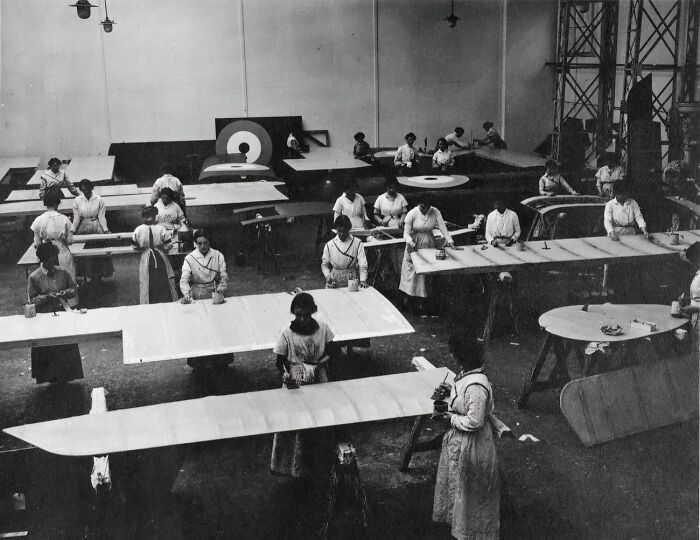
Image source: Nicholls, Horace
#3 A Woman At Work Wearing Protective Mask And Gloves During Sand Blasting Operations In The Granite Works Of Stewart & Co. Ltd., Fraser Place, Aberdeen, October 1918
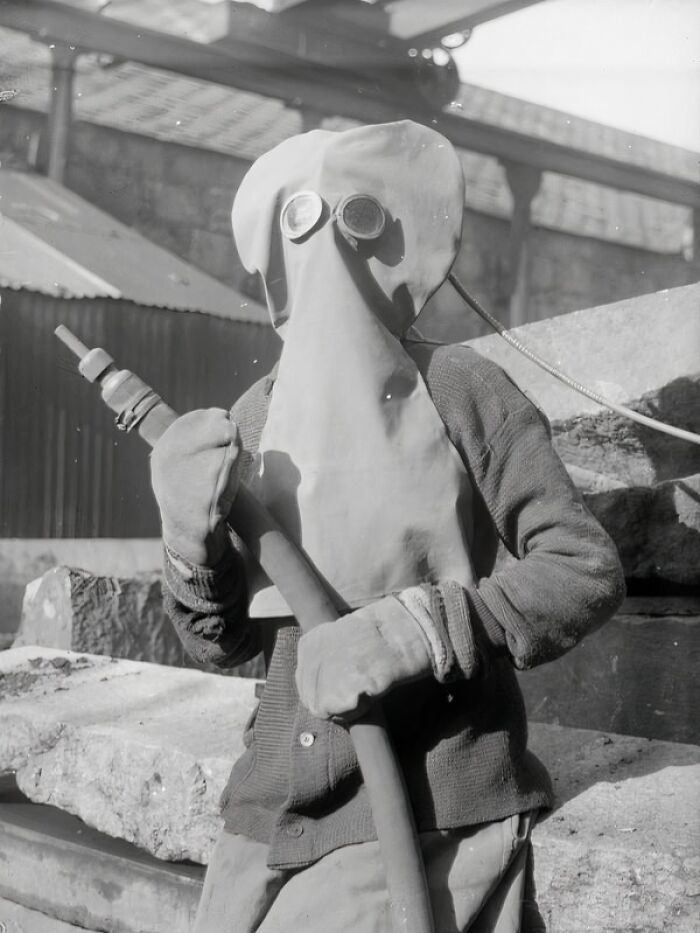
Image source: Lewis, George P.
#4 A Female Worker Operating A Polishing Machine In The Granite Works Of Stewart & Co. Limited, Fraser Place, Aberdeen, October 1918
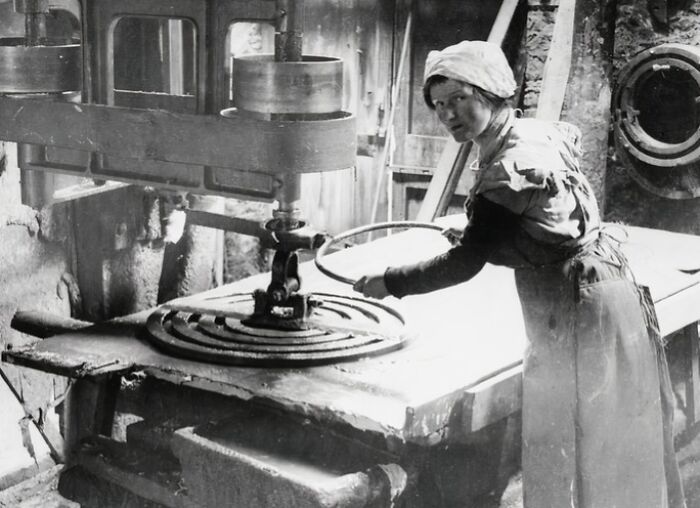
Image source: British official photographer
#5 A Female Woodworker For The Ministry Of Munitions Operating A Circular Cutter As A Chamfering Machine With A Safety Guard
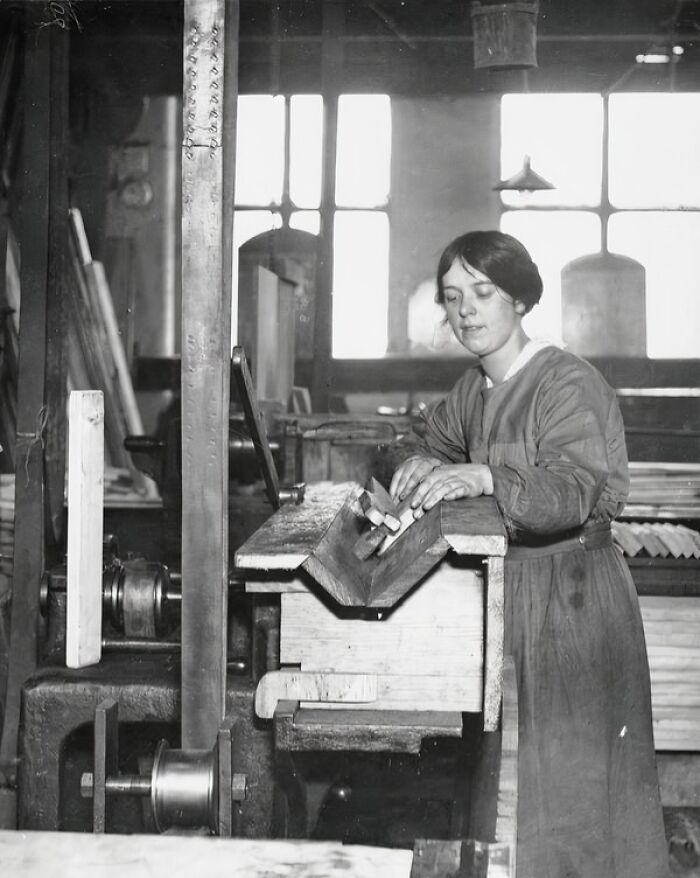
Image source: British official photographer
#6 Nurses And A Medical Officer Standing By A Red Cross And St John’s Ambulance Association Ambulance And Its Driver, In A Compound For Medical Officers
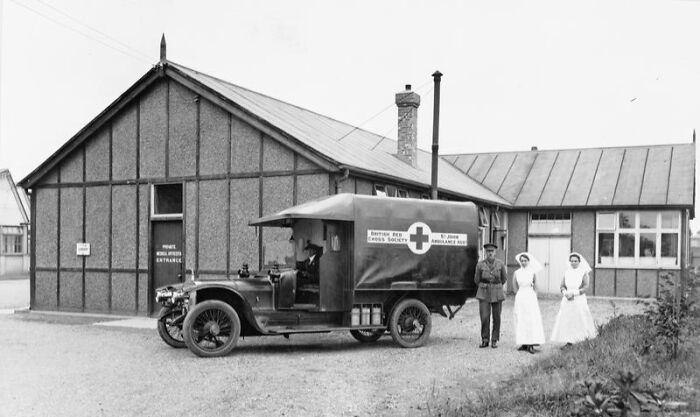
Image source: British official photographer
#7 A Female Restaurant Car Attendant Employed By The Great Western Railway Standing In The Carriage Door, 31st March 1915
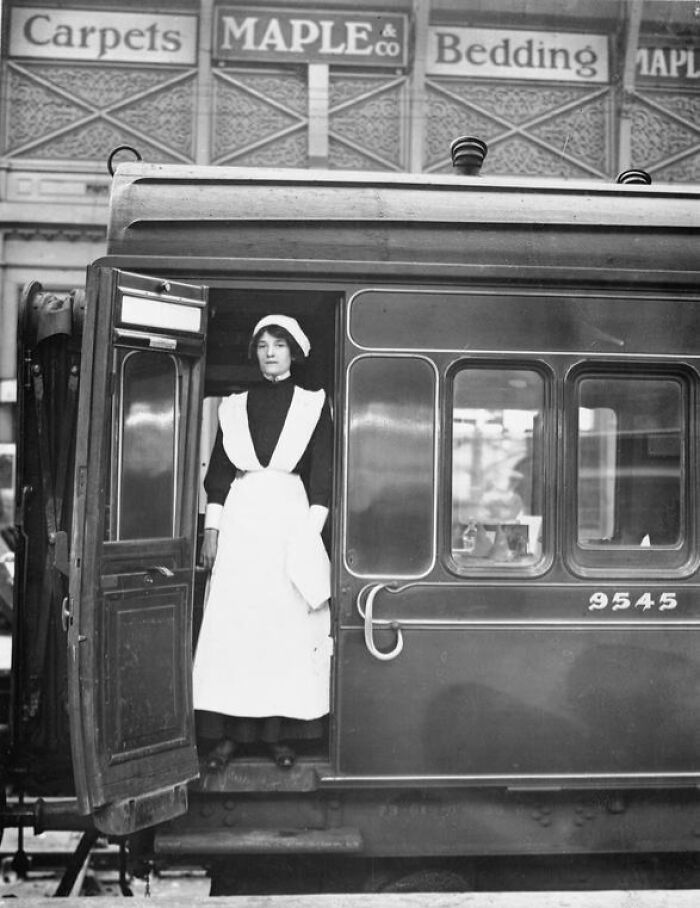
Image source: British official photographer
#8 The Employment Of Women In Britain 1914-1918
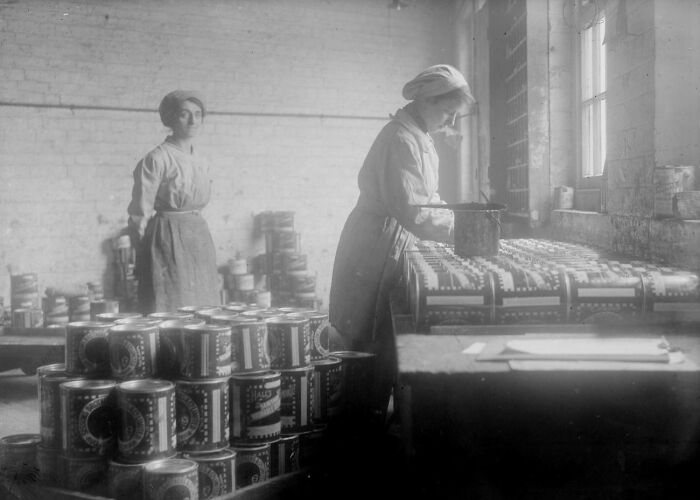
Image source: Lewis, George P.
#9 A Female Assistant Of The Weights And Measures Department Of The Corporation Of Glasgow Adjusting The Weights
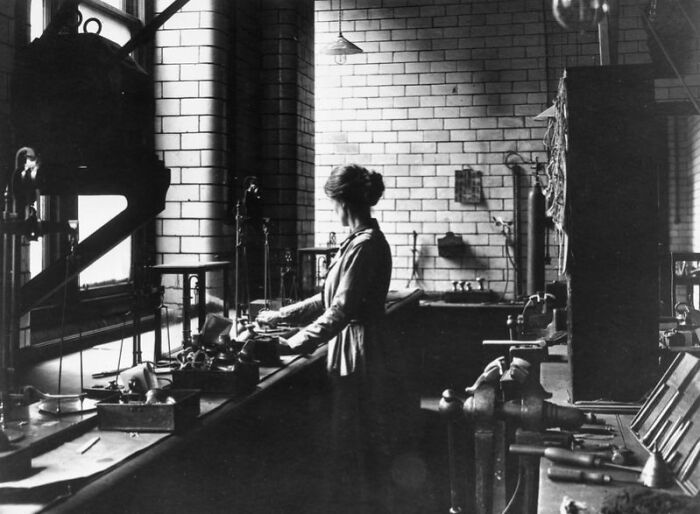
Image source: British official photographer
#10 Female Workers Carrying Metal Rods In A Naval Ship Building Yard
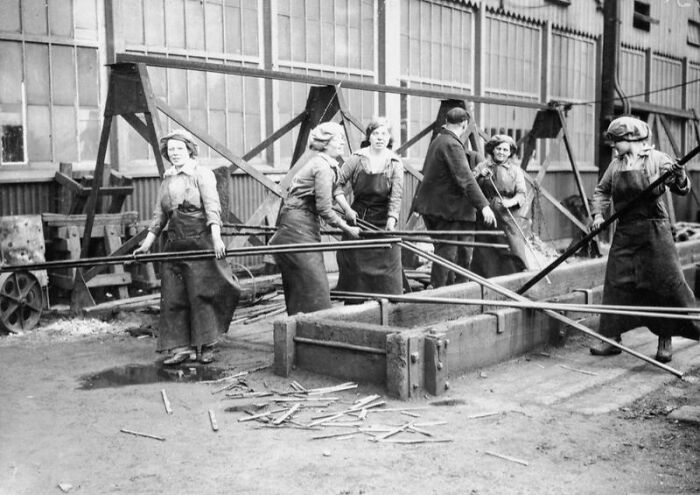
Image source: British official photographer
#11 Female Sheet Metal Worker Opening Tin Plates At The Beaufort Tin Plate Works In Morriston, South Wales
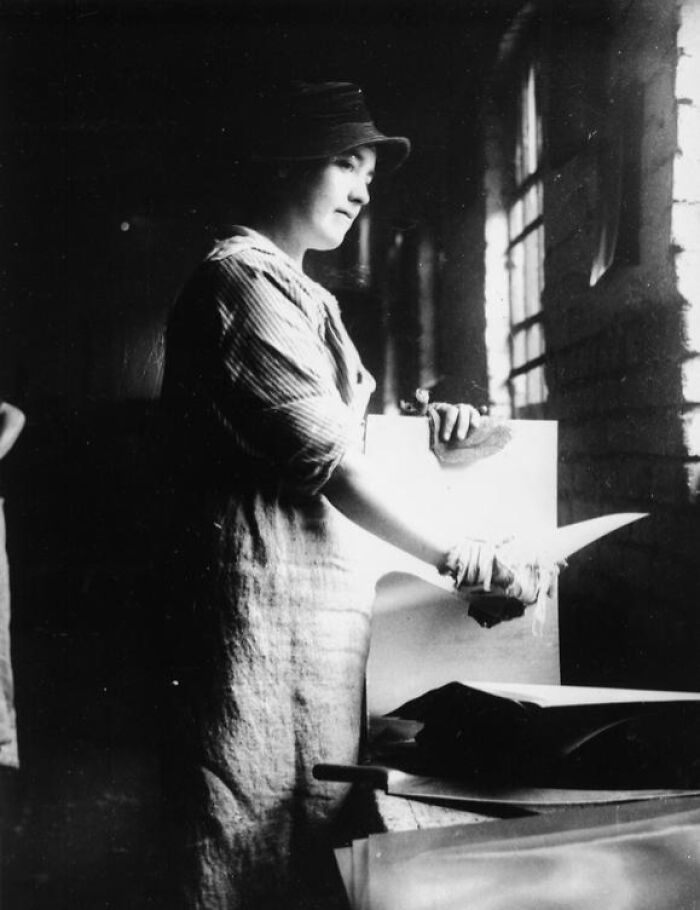
Image source: British official photographer
#12 Female Workers Trimming Hose In The Hosiery Works Of Moore Eady And Murcott Goode Limited At Markheaten Street In Derby
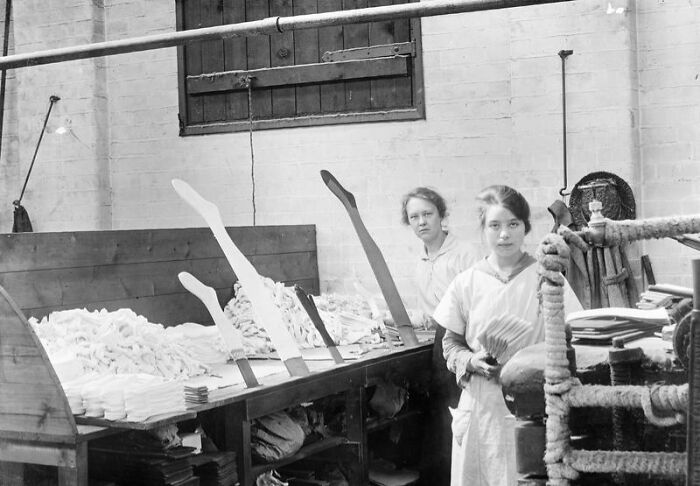
Image source: British official photographer
#13 Female Gas Fitters Stripping And Cleaning Street Lamps And Preparing Them For Reglazing In A Gas Works
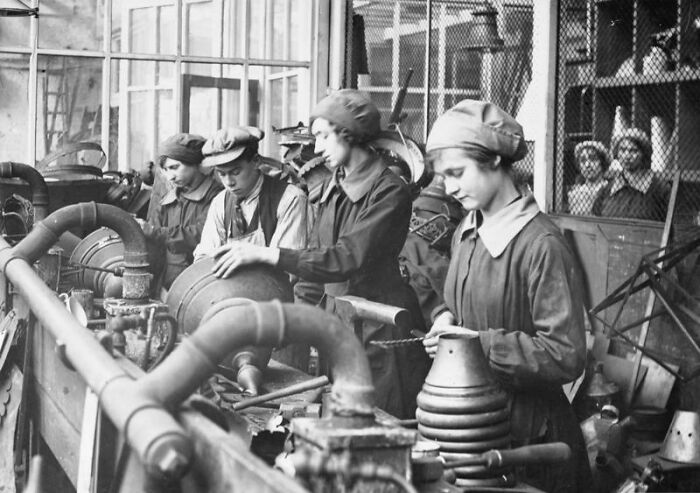
Image source: British official photographer
#14 A Female Station Master And Two Female Porters At Irlams O’ Th’ Height Station, Near Manchester, Of The Lancashire And Yorkshire Railway
In 1917 the Lancashire and Yorkshire Railway appointed its first female station master at Irlams o’ th’ Height. Soon afterward this station became the first on the network to be staffed entirely by women. By 1918 the Lancashire and Yorkshire Railway was employing 4,459 women.
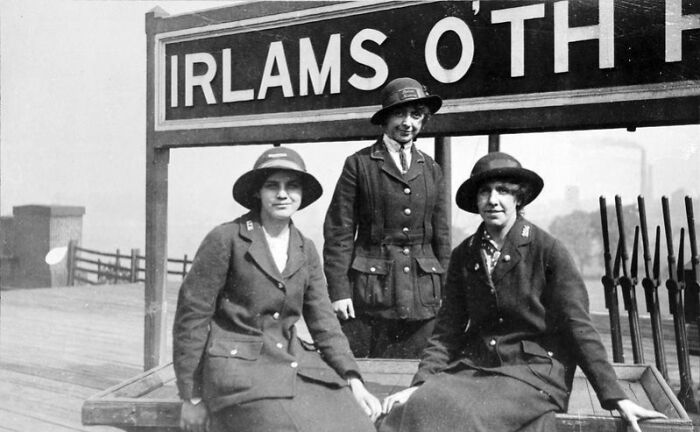
Image source: British official photographer
#15 Young Female Workers Winding Wire Rope, Work Previously Done By Men, At Craddocks Wire Rope Factory In Wakefield, 23rd August 1916
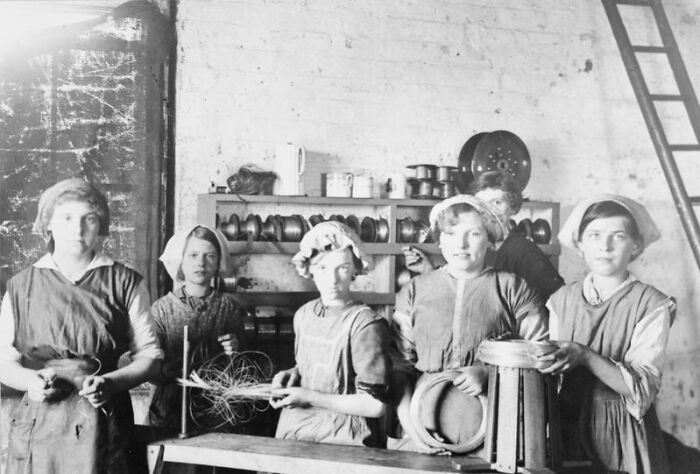
Image source: British official photographer
#16 Female Carriage Cleaners On The London And South Western Railway, Carrying Their Materials
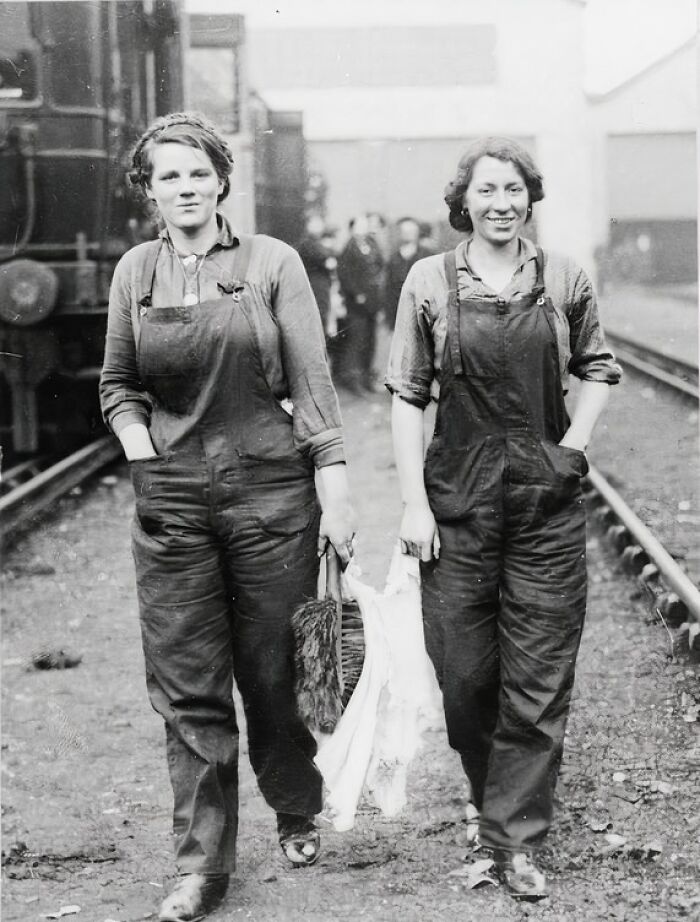
Image source: British official photographer
#17 A Female Worker Shapes A Wooden Aeroplane Propeller At The Aircraft Factory Of Frederick Tibbenham Limited At Ipswich

Image source: British official photographer
#18 A Female Worker Making Limbs For Dolls At The Toy Factory Of Nell Foy On Church Street In Chelsea, London
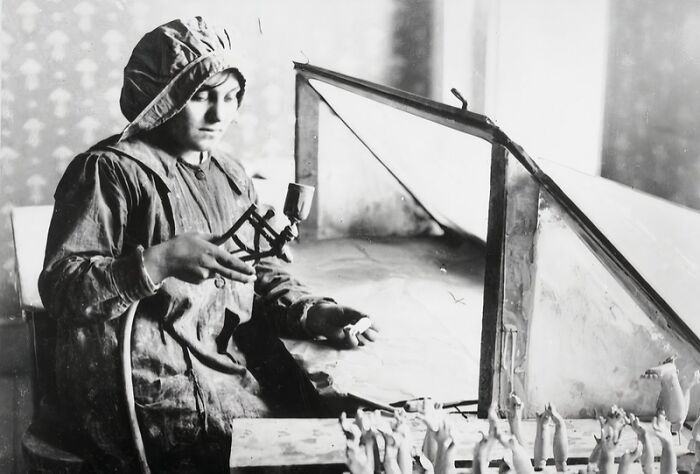
Image source: British official photographer
#19 Female Sub-Station Attendant Putting A Rotary Converter On Load In A Sub Station Of The Electricity Department Of The Corporation Of Glasgow
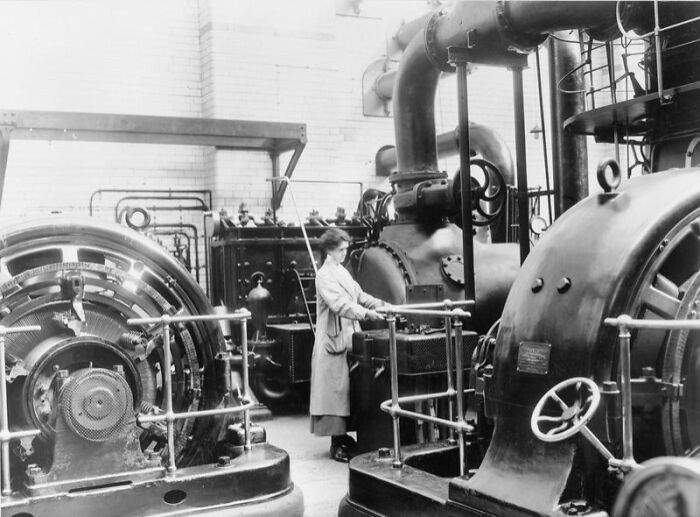
Image source: British official photographer
#20 Female Railway Workers Of The Lancashire And Yorkshire Railway Cleaning The Outsides Of Railway Carriages In The Sidings At Manchester
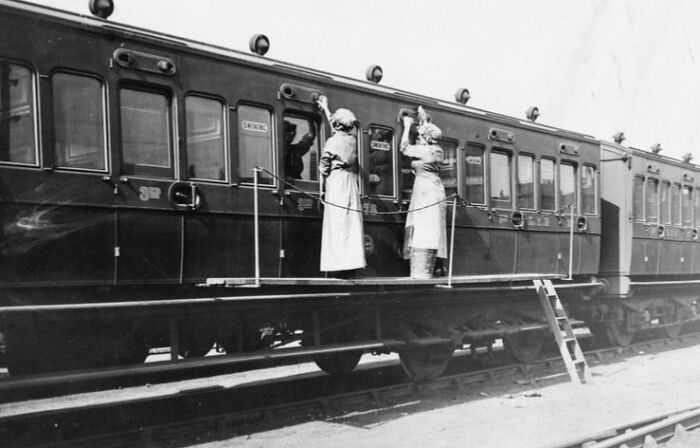
Image source: British official photographer
#21 Female Wood Choppers Producing Chips For Firewood
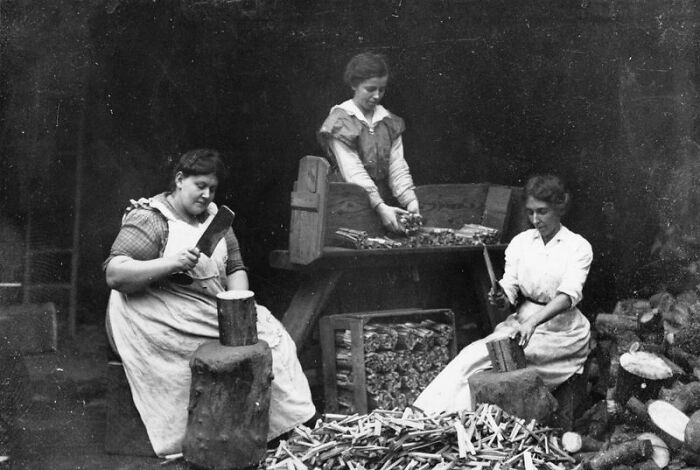
Image source: British official photographer
#22 Female Railway Porters Of The Great Eastern Railway Company Weighing Crates Of Soap And Other Cargoes Before Loading
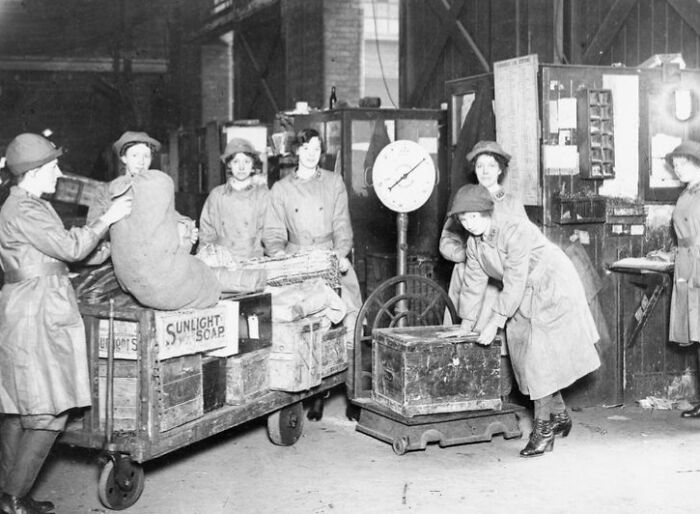
Image source: British official photographer
#23 Female Coil Tapers Of The Tramways Department Of The Corporation Of Glasgow
Two such women were employed by the department, starting in April 1918. They worked fifty-one hours per week and earned 23 shillings and 4 pence per week, including a bonus.
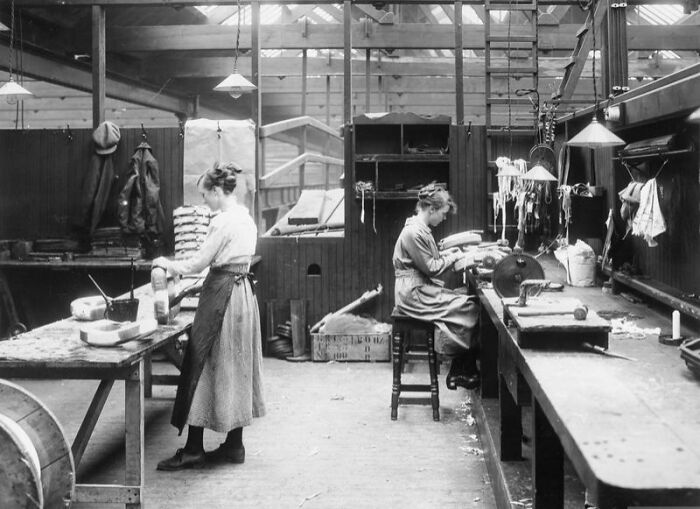
Image source: British official photographer
#24 Female Workers Trucking Sacks Of Produce On The Raw Sugar Floor Of The Sugar Refinery Of H. Y. Tate And Sons
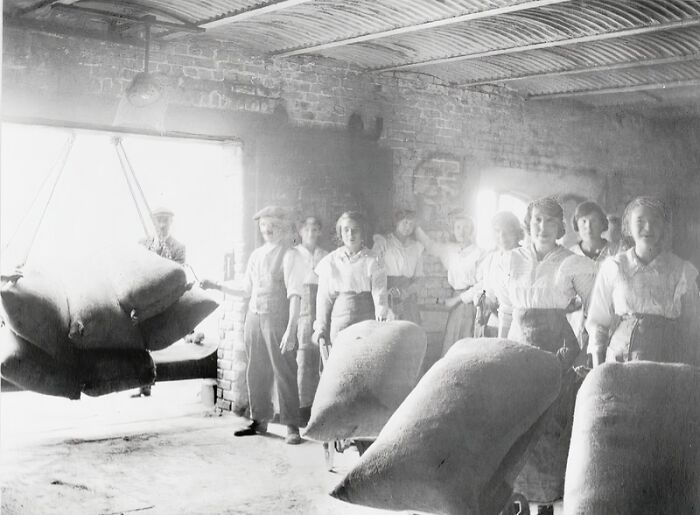
Image source: British official photographer
#25 A Female Generator Cleaner Of The Tramways Department Of The Corporation Of Glasgow
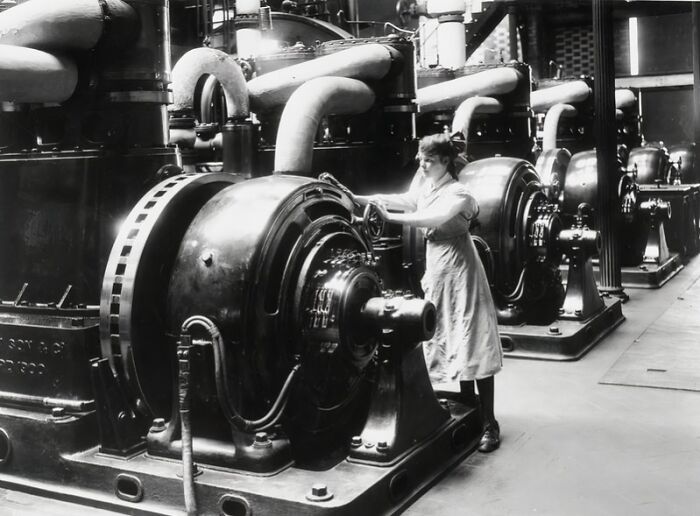
Image source: British official photographer
#26 Women, Likely Factory Workers, Sitting To Have Tea On A Break

Image source: IMPERIAL WAR MUSEUM PHOTOGRAPH ARCHIVE COLLECTION
#27 A Full-Length Portrait Of A Milk Woman As She Goes About Her Rounds, 1917
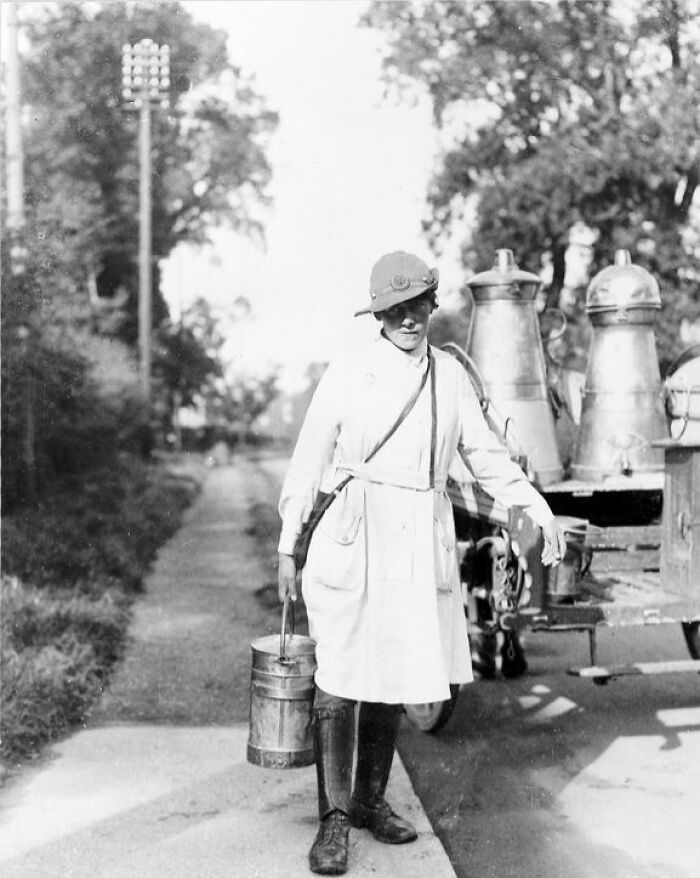
Image source: British official photographer
#28 Female Carriage Cleaners At Work On The Tracks Of The London And South Western Railway
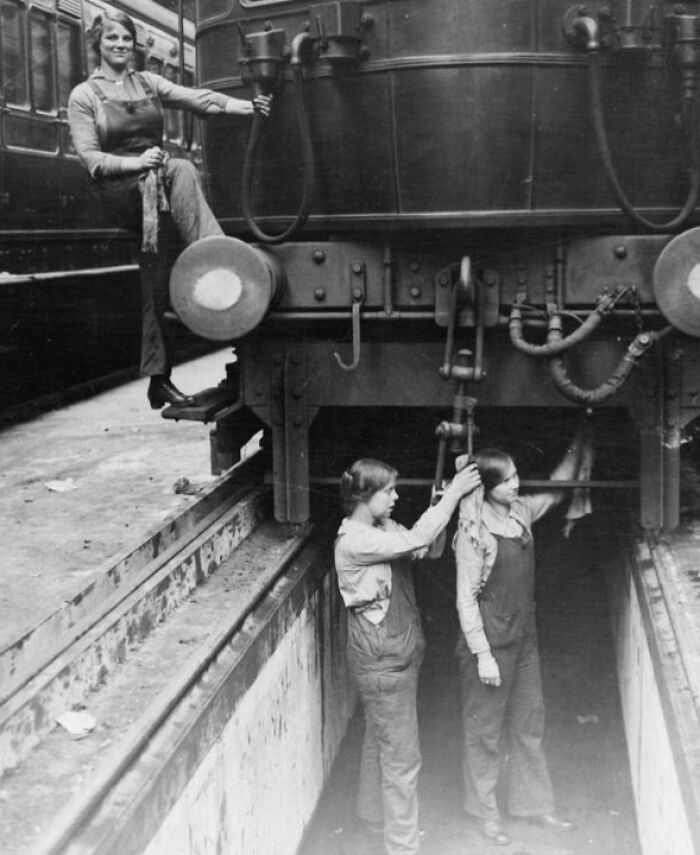
Image source: British official photographer
#29 A Female Worker Tending To The Plants In A Greenhouse Garden
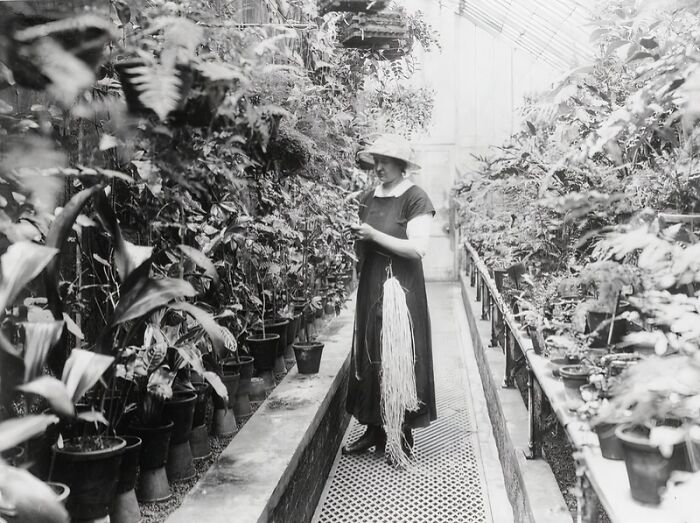
Image source: British official photographer
#30 Female Employees Of The Hotels Refreshment Rooms Department Of The Great Western Railway With Refreshment Baskets, Probably At Paddington Station In London
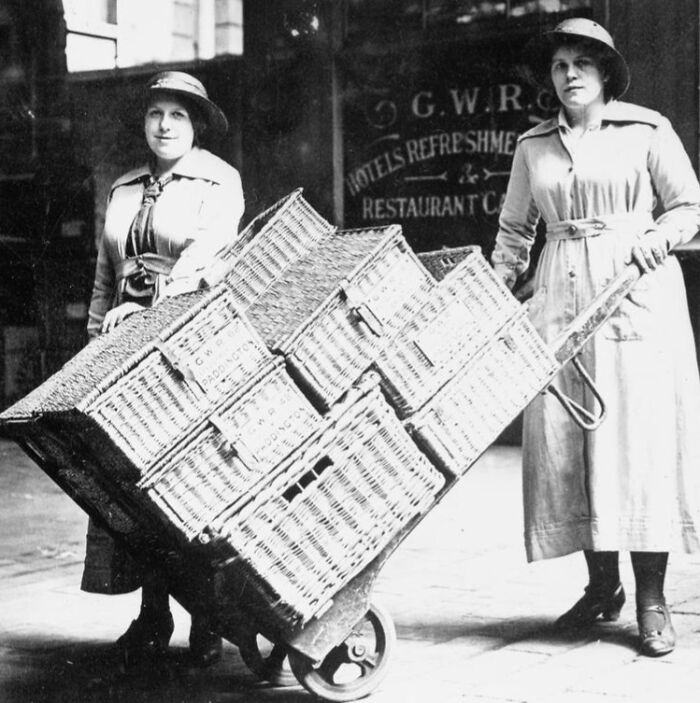
Image source: British official photographer
 Follow Us
Follow Us





